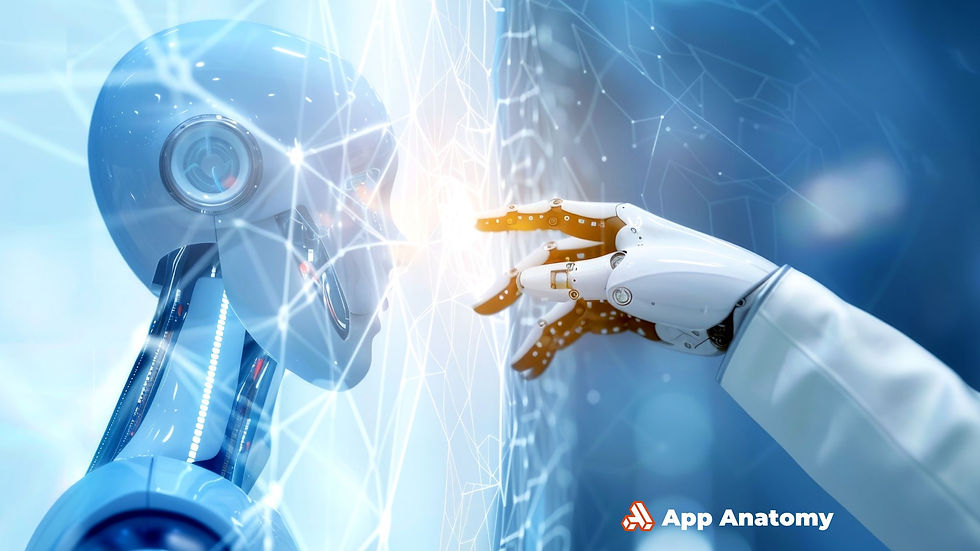AI Hallucinations: Why Even the Smartest Systems Get Facts Wrong
- 1 day ago
- 3 min read

“ChatGPT sounds confident, but what if it’s confidently wrong?”
We’ve all seen it: an AI answers your question with perfect grammar, bold certainty
and completely made-up facts. Welcome to the weird, frustrating world of AI hallucinations.
These aren’t bugs or glitches in the traditional sense. Hallucinations happen when an AI generates content that sounds plausible but simply isn’t true. Think fabricated quotes, fake citations, or imaginary case law. It’s not that the AI is trying to deceive you. It just doesn’t know the difference.
What You Will Learn in This Article
What AI hallucinations are and how they show up in everyday tools
Why AI systems generate false or misleading information
Real-world examples of hallucinations causing serious consequences
The technical reasons behind hallucinations in language and image models
How to reduce the risk of AI hallucinations with smarter prompts and oversight
Why human judgment is still essential when using AI-generated content
What Are AI Hallucinations, Really?
Let’s be clear: hallucinations in AI aren’t like dreams or visions. They’re false, misleading, or nonsensical outputs that sound right, until you check the facts.
For example:
A language model cites a medical study that doesn’t exist.
An image generator creates a historical figure with the wrong features.
A chatbot confidently claims someone won an award they never received.
These AI hallucinations don’t just pop up in text. They affect image tools, voice assistants, even search engines that rely on large language models. The key issue? These tools are designed to be fluent, not factual.
It’s like asking someone to finish your sentence, without ever verifying if the sentence is true.
Why AI Hallucinations Happen (Spoiler: It’s Not Intentional)
So why do these systems make things up?
Here’s the short answer: AI doesn’t understand meaning. It predicts. When you ask a question, it’s not retrieving facts, it’s generating what statistically looks like a good response.
Here’s a closer look at why hallucinations occur:
Language models aren’t grounded in reality.
They don’t check facts, they predict likely word sequences.
Training data may be flawed.
If the data includes errors, so will the output.
There’s no memory or context.
The model doesn’t “know” past events or the truth of claims, it’s guessing.
Pattern-matching can go wrong.
If someone once said, “Einstein invented the microwave” (he didn’t), the AI might repeat it.
Overfitting is real.
Sometimes the AI locks onto weird patterns that feel accurate but aren’t.
Ultimately, AI hallucinations are a side effect of how these systems are built. They don’t lie, they just don’t know what’s real.
When Hallucinations Cause Real-World Damage
Now for the scary part. These aren’t harmless quirks, they can have real consequences.
Here are just a few real-world examples:
Lawyers submitted legal briefs with fake court cases created by ChatGPT, complete with citations to rulings that never existed.
Students and researchers cited made-up sources, only to find nothing matched up.
Doctors and patients using AI chatbots have been fed incorrect medical advice.
Brands published AI-generated content filled with inaccuracies, damaging trust and credibility.
And let’s be honest, AI’s tone doesn’t help. It speaks with confidence. It sounds right. And that makes AI hallucinations far more dangerous than simple typos.
Can We Stop Hallucinations? Not Entirely, But We Can Reduce Them
Hallucinations aren’t going away completely, but we can limit how often they appear and how much harm they cause.
Here’s how:
Use Retrieval-Augmented Generation (RAG)
RAG models combine a language model with real-time search, pulling info from verified sources rather than guessing.
Always include human review.
Especially in high-stakes content (legal, health, finance), a person must check the output before publishing or acting on it.
Don’t use AI for factual first drafts.
If it’s supposed to be accurate, don’t start with AI, start with research.
Prompt more carefully.
Try phrases like: “Only include information backed by real sources” or “Add a link to all claims.”
Know when to skip AI entirely.
Some tasks require understanding, nuance, or real-time facts, areas where AI still struggles.
With these practices, AI hallucinations become less likely and easier to catch when they do happen.
Trust, But Always Verify
In a world where AI can generate answers in seconds, the temptation is strong to trust whatever it says. But speed and fluency aren’t the same as truth.
AI hallucinations are reminders that even the smartest systems can’t replace human judgment. They don’t have a moral compass. They don’t understand accuracy. They just predict, based on patterns.
So go ahead, use AI. Just don’t believe everything it says.





Comments